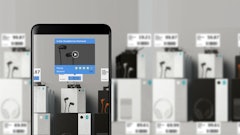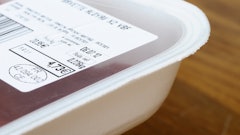
The food and beverage and quick-service restaurant (QSR) industry have learned that efficiency is the key to customer satisfaction for last mile deliveries. However, none seem to have cracked the best way to get the deliveries completed. Last-mile delivery software will be the key to resolving challenges faced by the food industry for final-leg of deliveries. Getting the parcels delivered using the best routes will help meet deadlines for 10- to 30-minute deliveries. A last-mile delivery route optimization software will help businesses attain their goal.
Is last-mile delivery a growing concern for the logistics industry?
In a single word- Yes. The growth of e-commerce and online food delivery has seen a rapid spurt that disrupted the global supply chain. One might even recall the Evergreen shipment stuck in the Suez Canal, blocking tracking until freed. This was a global incident that led to increased pricing and shipping delays. The lack of drivers was another problem that most food outlets faced to ensure timely deliveries.
The pandemic led to many vendors going online. The direct-to-consumer (D2C) business was booming and the need for enhanced customer experience was the key to retaining customers. Even bigger brands had to find ways for last-mile delivery optimization to fulfill orders faster.
Different challenges that last-mile delivery software can solve
Rising delivery cost. Though the distance that needs to be traveled for last-mile delivery is the least, the delivery cost is the most. Here, a last-mile delivery software comes into the picture to help the food and beverage and QSR businesses meet increased demands and other delivery delays.
Delivery delays. Numerous factors can lead to delivery delays such as vehicle breakdowns, roadblocks, shipping delays, etc. Route optimization for last-mile delivery is key to helping food and beverage and QSR businesses avoid delivery delays.
Customer unavailability. What should one do if the customer is not available when delivery is to be made? This is the question that haunts most delivery businesses. Using last-mile delivery software can help schedule specific delivery times that meet customer needs. This helps avoid problems faced with customer unavailability and improves fleet and operational efficiency.
Inefficient routes. Route optimization for last-mile delivery is the key to problems faced with inefficient routes for delivery. The parcels not only get delivered on time but also within the shortest duration to improve customer satisfaction. The food and beverage and QSR businesses are adapting the automated driver allocation (based on distance and skill sets) to ensure deliveries are completed to meet customer demands. For example, delivery drivers with special skill sets can be assigned to deliver ice cream or another driver can be assigned for fast food delivery based on his vehicle type.
Order returns. Even with the rise in technology, most businesses still need to optimize for order returns. Return logistics is a key feature to look for in a last mile delivery software. Any business that can crack its reverse logistics will save plenty for return orders and create a sustainable ecosystem for deliveries.
Live tracking. Operations managers not having visibility of orders and drivers is a crucial concern for last mile delivery. A last-mile delivery software can integrate with a custom driver app or GPS trackers will solve real-time visibility issues. Even customers will be encouraged to come back to the platform as they have visibility of their orders in real time. This is a crucial aspect for food and beverage and QSR businesses for whom every minute for delivery is crucial to improve customer experience.
Carrier integration. What’s the best way for food and beverage and QSR businesses to handle orders during peak hours and festive seasons? Yes, carrier integration is the solution. A last-mile delivery software can help with the integration of third-party logistics (3PL) carriers to help with the order surcharge. This helps avoid delivery delays and the option to choose carriers that can get delivery at the best rates avoids bleeding pockets for last-mile deliveries.
Need for supporting data. Older and manual processes used to get delivery details tracked manually. This led to failures in tracking the number of successful deliveries, distance covered by each driver, on-time deliveries, payment details, etc. A last-mile delivery software will help food and beverage and QSR industries resolve all the above difficulties faced by manual processes.
Last-mile delivery software will play a crucial role in building the brand value of your business. Automation will allow food and beverage and QSR businesses to keep up with customer expectations and improve customer satisfaction. The ability to optimize routes for last-mile deliveries, offer real-time tracking, payments and more will help businesses meet quarterly targets. So, if you are facing difficulties with last-mile deliveries, selecting the right delivery management software will be the key to cracking the last-mile problems.




















